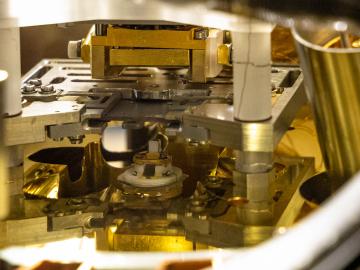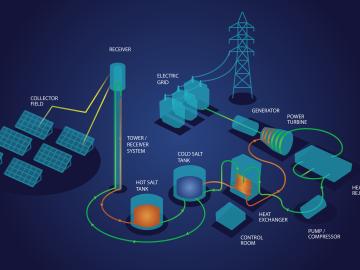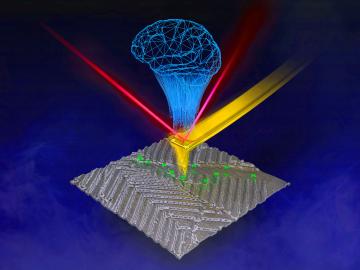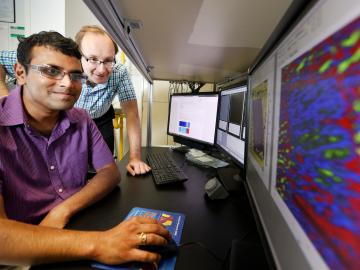
A team of scientists with ORNL has investigated the behavior of hafnium oxide, or hafnia, because of its potential for use in novel semiconductor applications.

A team of scientists with ORNL has investigated the behavior of hafnium oxide, or hafnia, because of its potential for use in novel semiconductor applications.

Rama Vasudevan, a research scientist at the Department of Energy’s Oak Ridge National Laboratory, has been elected a Fellow of the American Physical Society, or APS.

Oak Ridge National Laboratory scientists recently demonstrated a low-temperature, safe route to purifying molten chloride salts that minimizes their ability to corrode metals.

Researchers from ORNL, the University of Tennessee at Chattanooga and Tuskegee University used mathematics to predict which areas of the SARS-CoV-2 spike protein are most likely to mutate.

Researchers at ORNL are teaching microscopes to drive discoveries with an intuitive algorithm, developed at the lab’s Center for Nanophase Materials Sciences, that could guide breakthroughs in new materials for energy technologies, sensing and computing

Sergei Kalinin, a scientist and inventor at the Department of Energy’s Oak Ridge National Laboratory, has been elected a fellow of the Microscopy Society of America professional society.

At the Department of Energy’s Oak Ridge National Laboratory, scientists use artificial intelligence, or AI, to accelerate the discovery and development of materials for energy and information technologies.

Six scientists at the Department of Energy’s Oak Ridge National Laboratory were named Battelle Distinguished Inventors, in recognition of obtaining 14 or more patents during their careers at the lab.

Kimberly Jeskie and Michelle Kidder of the Department of Energy’s Oak Ridge National Laboratory have been named 2018 American Chemical Society (ACS) fellows.

